
It was in 2000, during a dive in a deep-sea submersible, that scientists stumbled upon a place unlike anywhere else on Earth. From a distance, it looked like an abandoned metropolis, its tall, smoking towers left billowing long after its inhabitants had fled. On closer inspection, the site, located 800m deep in the middle of the Atlantic Ocean, turned out to be teeming with microbes, and the towers, seen in sharp focus, the likely source of their nutrition.
The Lost City is now recognised as a unique hydrothermal ecosystem, where temperatures rise to 40-70°C and calciumrich, alkaline waters spew from seafloor vents, creating carbonate chimney-like structures over time, the largest of which, called Poseidon, reaches 60m tall. Life thrives here: not just microbes, but sponges, crabs and even corals. Scientists believe that the Lost City, with its unusual conditions, could give clues to the necessary precursors for life on Earth and on other planets, and have earmarked it for UNESCO World Heritage status.
Some of the most extraordinary parts of our planet are out of sight. They are also outside the control of any single nation, in the two-thirds of our ocean known as the high seas. Typically starting 200 nautical miles from shore, the high seas cover roughly 43 per cent of our planet’s surface and, with an average depth of 4,000m, they constitute 95 per cent of Earth’s available living space. From their sunlit shallows to their lightless depths, they are home to a rich diversity of creatures and ecosystems, many of which we are only now beginning to appreciate.'
ABOUT THE AUTHOR
A former marine biologist, Olive Heffernan now works as a lecturer and writer, specialising in ocean science and climate change.
This story is from the {{IssueName}} edition of {{MagazineName}}.
Start your 7-day Magzter GOLD free trial to access thousands of curated premium stories, and 9,000+ magazines and newspapers.
Already a subscriber ? Sign In
This story is from the {{IssueName}} edition of {{MagazineName}}.
Start your 7-day Magzter GOLD free trial to access thousands of curated premium stories, and 9,000+ magazines and newspapers.
Already a subscriber? Sign In
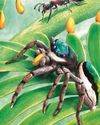
Jump Around - Bagheera Kiplingi - The acrobatic spider with a predilection for veggie food
Spiders eat flies, right? everyone knows that the 45,000 or so spiders in the world are all obligate carnivores, more or less – eating other animals, mainly invertebrates. Nature, however, loves an exception, and one particular spider missed out on that ecological memo. It goes by the wonderful scientific name of Bagheera kiplingi, and its claim to fame is that its diet is – at least mostly – vegetarian.
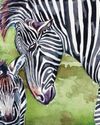
Female of the Species - Zebras - A strong sisterhood is key to staying safe
Zebras are masters of confusion. Their collective noun is ‘a dazzle’, which is fitting since their bodies and behaviour have been surprising scientists for centuries.
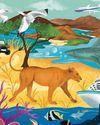
See It, Save It? - Wildlife tourism can be a powerful ally in protecting nature - but it can also harm it. We weigh up the pros and cons.
The sums of wildlife travel aren’t as simple as more tourists equals happier nature. How much did my visit really contribute to the conservation of Lady Liuwa and her habitat – and was that outweighed by carbon emissions from my flights? Did my presence disturb the animals’ natural behaviour more than it reduced the threat of poaching or benefited local communities?The question of whether wildlife travel is, on balance, good for wildlife is a complex one – and there’s no simple answer.

Can Your Really Offset Emissions? - Planning an overseas wildlife-watching trip entails facing some inconvenient truths
Imagine (or maybe you don't need to) that you hanker after the safari trip of a lifetime in sub-Saharan Africa. A 17-day tour beginning at the iconic Victoria Falls, passing through Zimbabwe, Zambia, Malawi and Tanzania, taking in some of the continent’s most wildlife-rich national parks, and ending on the lush island of Zanzibar.

Metamorphosis: a life-changing event
WITH EVOLUTIONARY BIOLOGIST JV CHAMARY
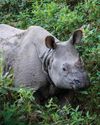
New series for BBC One: Asia
Settle in this autumn for a new natural-history extravaganza on BBC One and iPlayer: the longawaited Asia, presented by Sir David Attenborough.
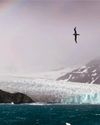
Loss of Antarctic sea ice could impact seabird food supply
Albatrosses and petrels may be forced to fly further to feed
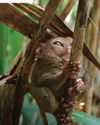
Tarsiers in trouble
Urgent action is needed to ensure survival of the Yoda-like primate
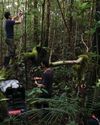
SNAP-CHAT
Chien Lee on shrew loos, rogue drones and being rained out of bed

VISIONS OF NATURE
The winners of the Wildlife Artist of the Year competition 2024, from David Shepherd Wildlife Foundation